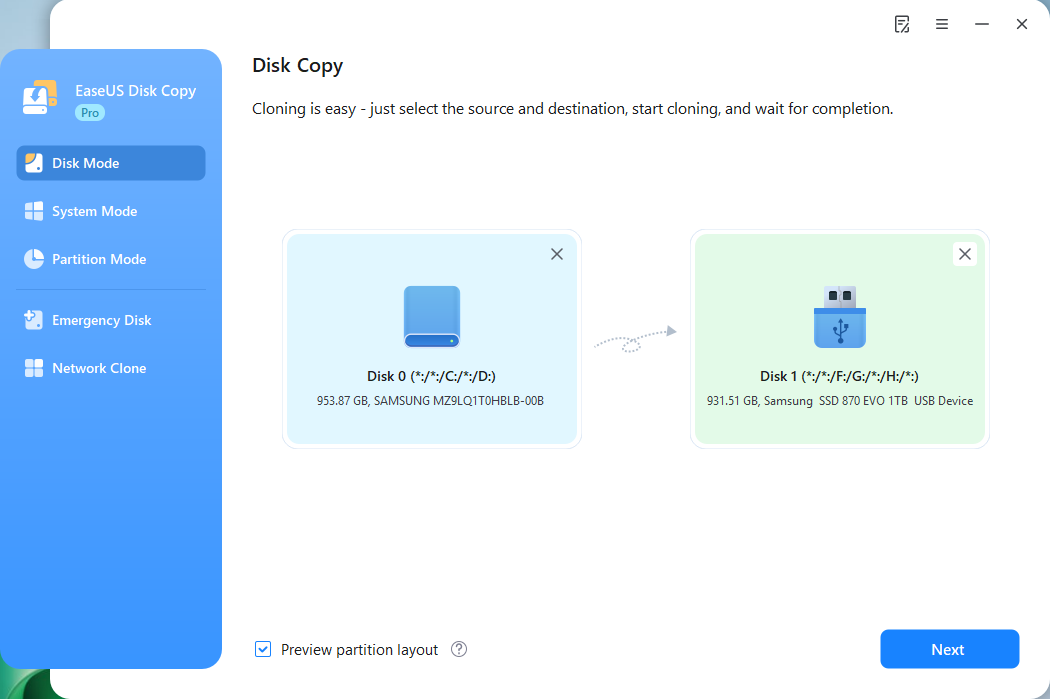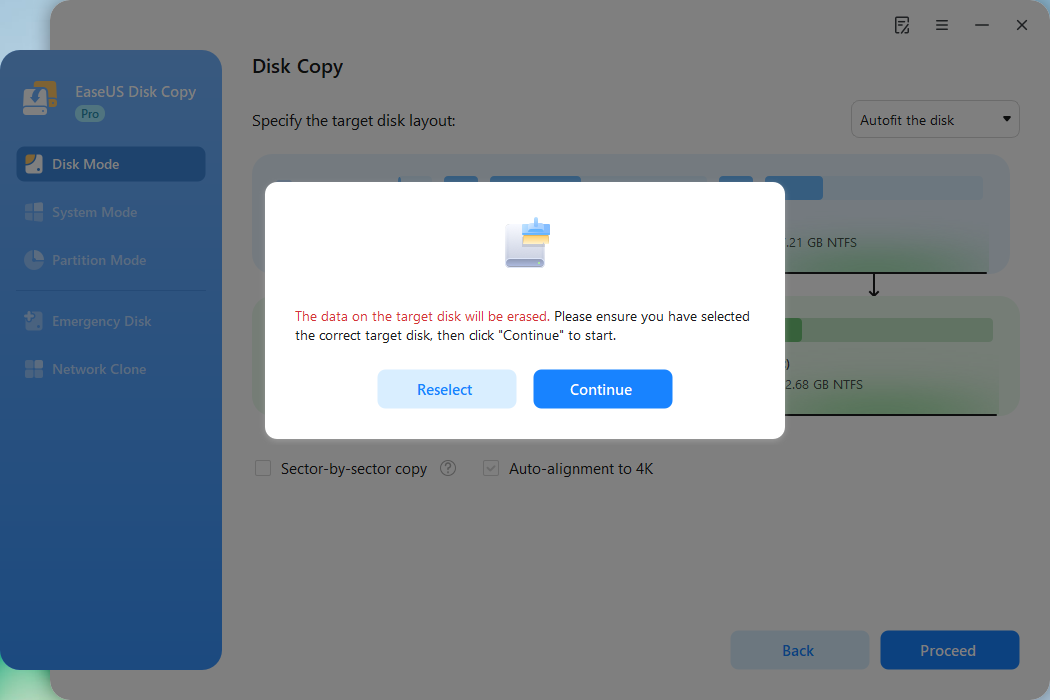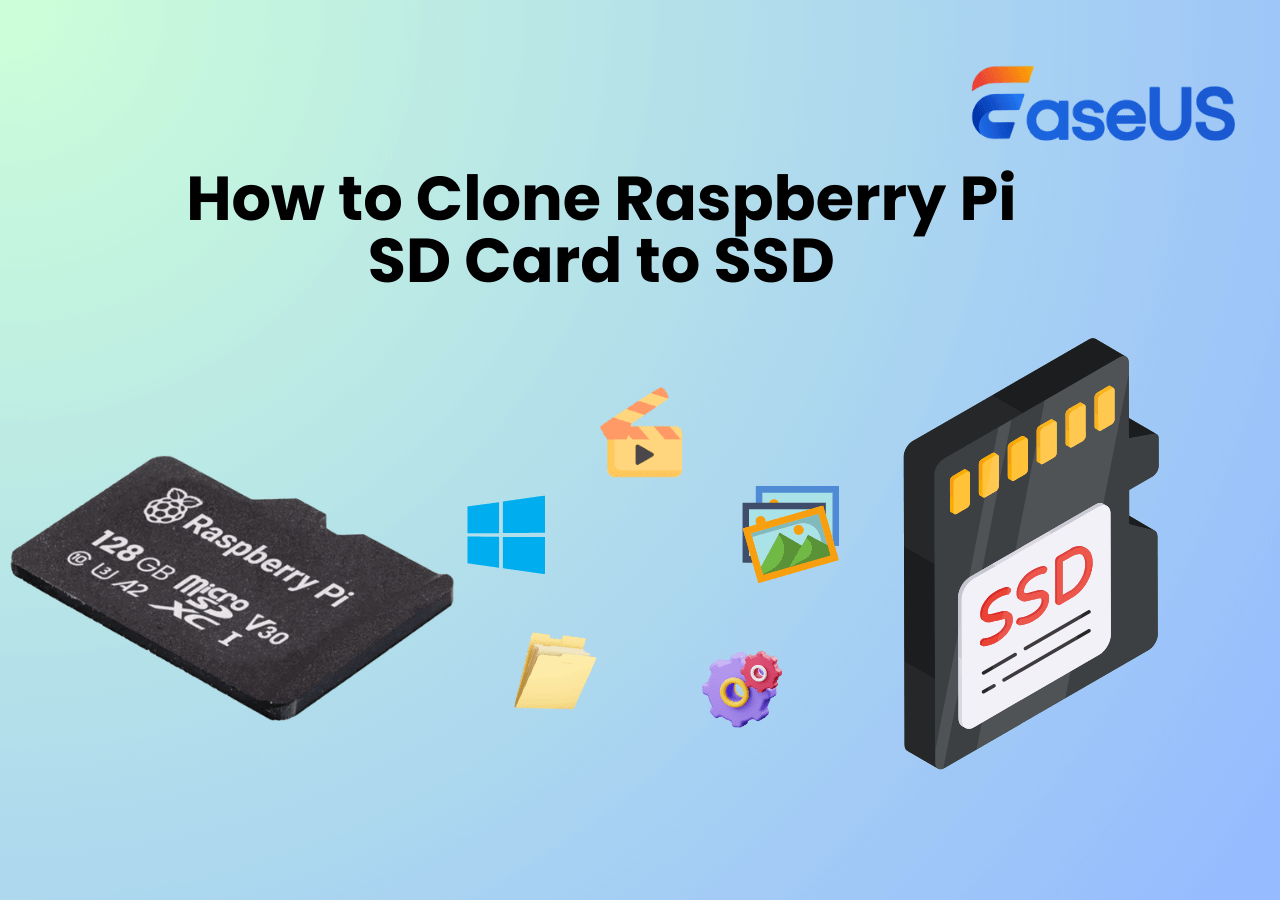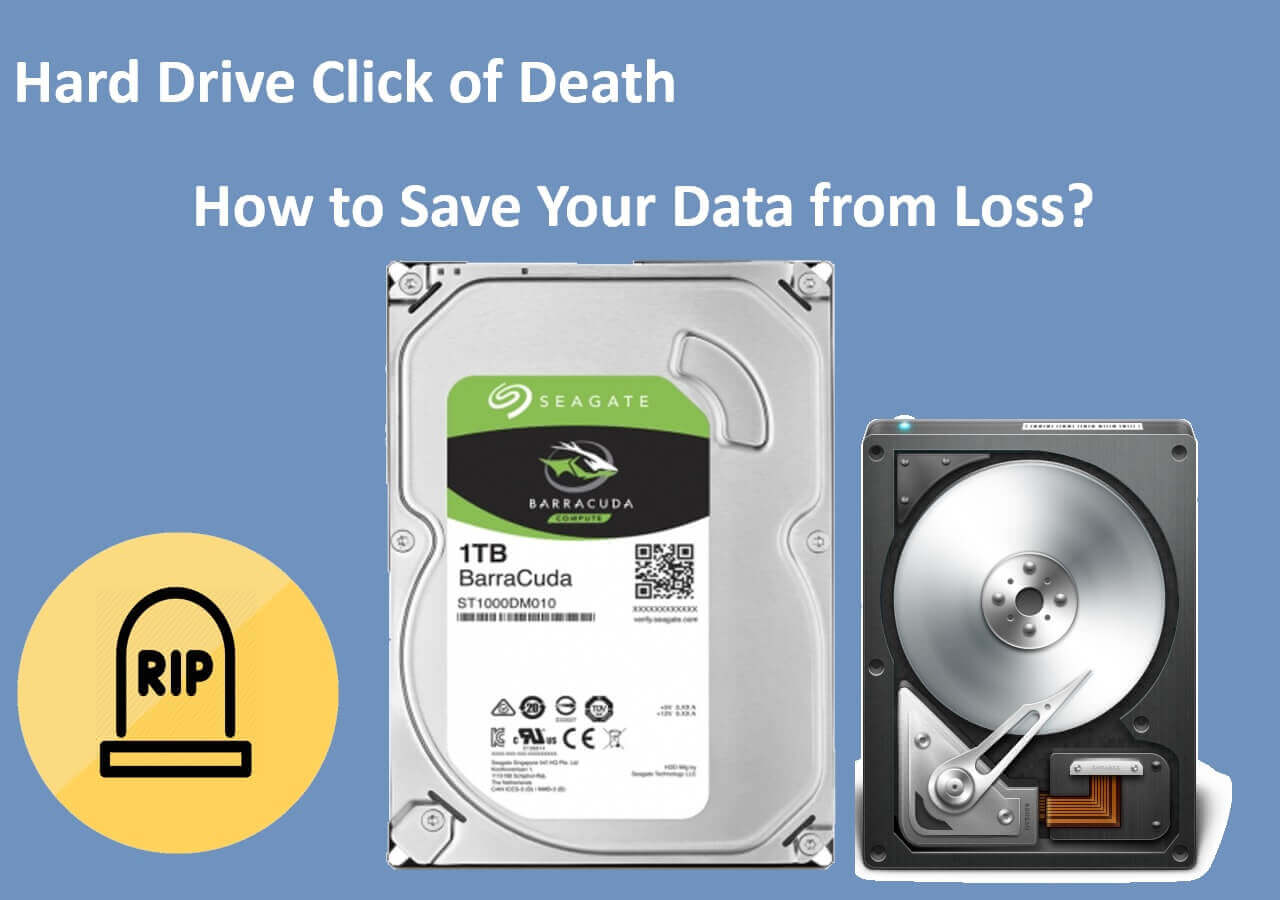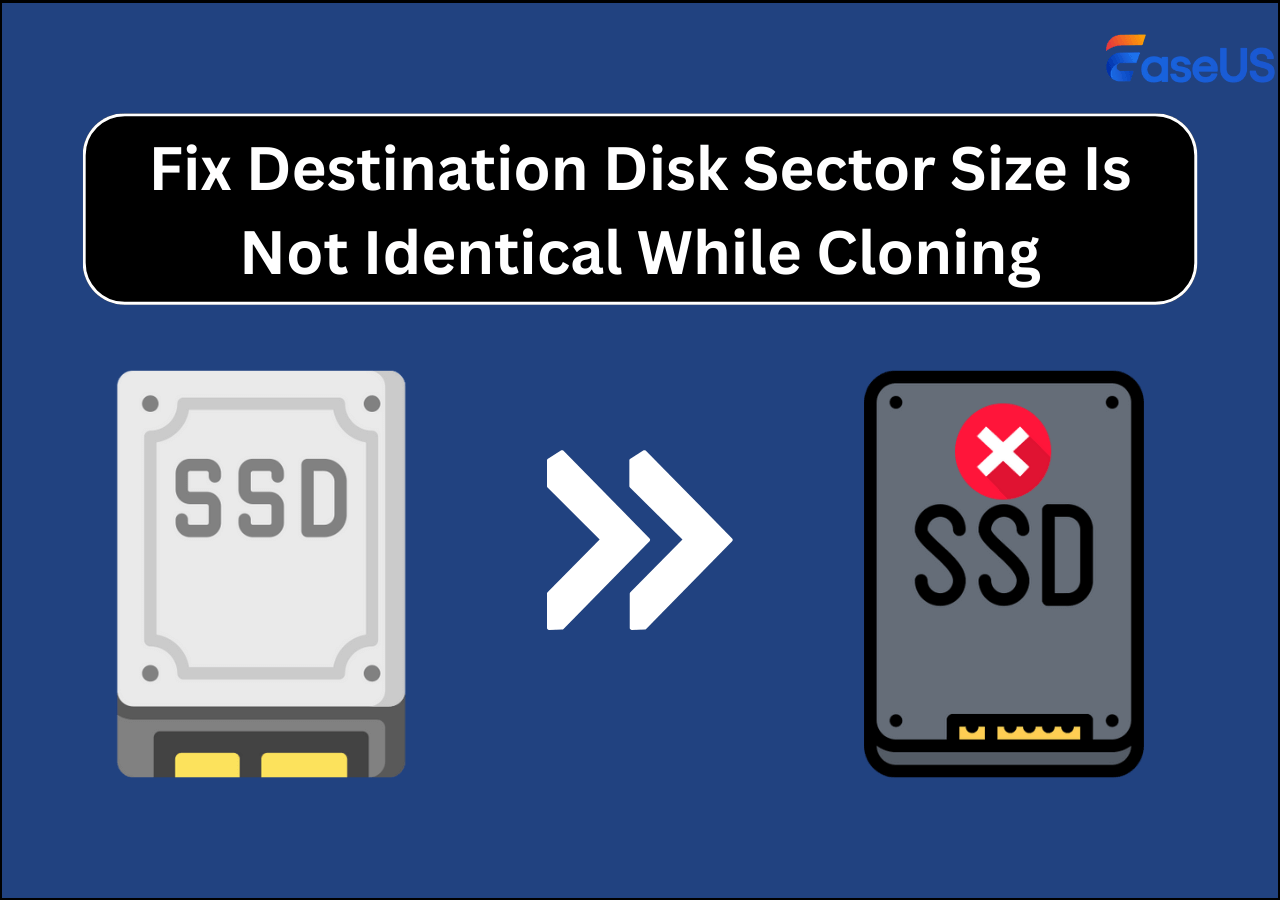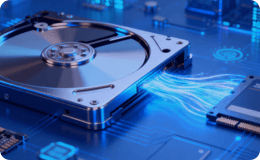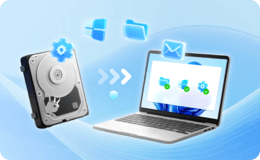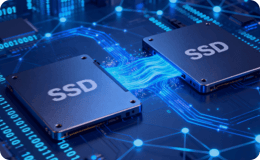Page Table of Contents
SATA and NVMe are two popular storage technologies nowadays, and they are both used in SSD environments. However, these two types of interfaces differ in many aspects, including interface type, speed, form factors, physical appearance, price, security mechanisms, etc.
- 💾SATA (serial advanced technology attachment) is an interface for transferring data between a computer's central circuit board and storage devices. It has replaced the previous PATA or parallel ATA interface and has become a commonly used interface to link HDD and SSD.
- 💾NVMe(non-volatile memory express) is an interface specially designed for SSD to access data storage devices. It has better throughput and quicker response time than SATA, which is more suitable for high-performance, non-volatile storage media.
Due to its excellent performance, NVMe has become the first choice for most game players, editors, and businessmen. With people's demand for high-performance storage devices, the need to clone SATA to NVMe has arisen.
But a number of issues will come up during this process, the most frequent of which is Clone SATA to NVMe Won't Boot. A user case is as follows:
Why Clone NVMe SSD Won't Boot
Are you also struggling with the same situation mentioned above? This problem may occur for many potential reasons. Some of the common ones are:
- Unstable or incorrect disk connection;
- Failed SATA to NVMe cloning process;
- The cloning process is corrupted or interrupted;
- The bootable sectors are not cloned to NVMe SSD;
- The new cloned NVMe is not set as the boot drive;
- Incompatible BIOS boot mode;
- MBR and GPT conflict.
Don't worry; we will provide 7 solutions in the next part so you can resolve the issue effectively. Try them one by one.
🔖Further reading: Clone NVMe SSD to SATA SSD
7 Effective Fixes to Slove 'Clone SATA to NVMe Won't Boot'
Quick Navigation:
- Method 1. Install NVMe SSD Correctly and Properly
- Method 2. Change Boot Order in BIOS
- Method 3. Set BIOS Boot Mode to UEFI or Legacy
- Method 4. Set System Partition as Active Partition
- Method 5. Perform Bootre.exe Tool
- Method 6. Reclone SATA SSD to NVMe SSD🔥
- Method 7. Seek Help from Professional Technical Support
- ❤️Warm Tip:
- If you are not sure about the cause of the error, recloning SATA to NVMe(Method 6) is the way out. Using professional disk cloning software EaseUS Disk Copy to ensure a smooth and seamless SATA to NVMe SSD cloning.
Method 1. Install NVMe SSD Correctly and Properly
Check if the NVMe SSD is properly installed in the M.2 slot, which is very easy to find on a desktop. If you use a laptop, the location will vary, typically under the bottom panel or the keyboard.
Make sure it is installed correctly and your computer can recognize it.
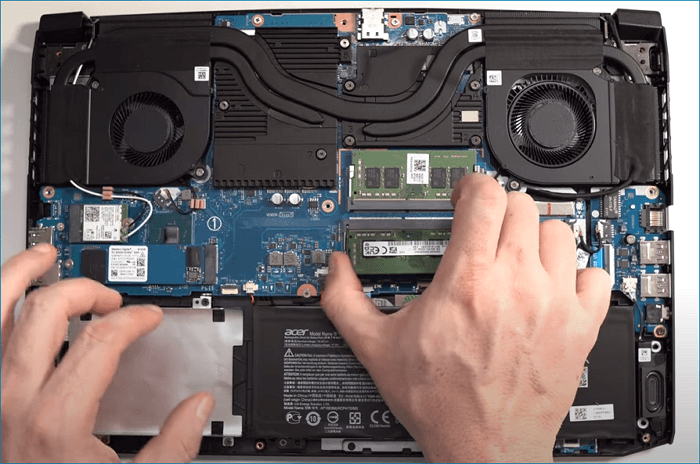
Method 2. Change Boot Order in BIOS
Another possibility is that you didn't boot from the cloned NVMe SSD if you simultaneously kept the original SATA disk and new NVMe SSD on your computer. In this case, you can change the boot disk in BIOS settings to make it boot from the NVMe disk.
- Shut down your PC, restart it, and press F2.F8/F12/Del key to enter BIOS settings.
- Locate the Boot tab and select the NVMe SSD as the boot drive.
- Save the changes and exit BIOS.
- Restart your computer, wait patiently, and check if it can boot up from cloned SSD.
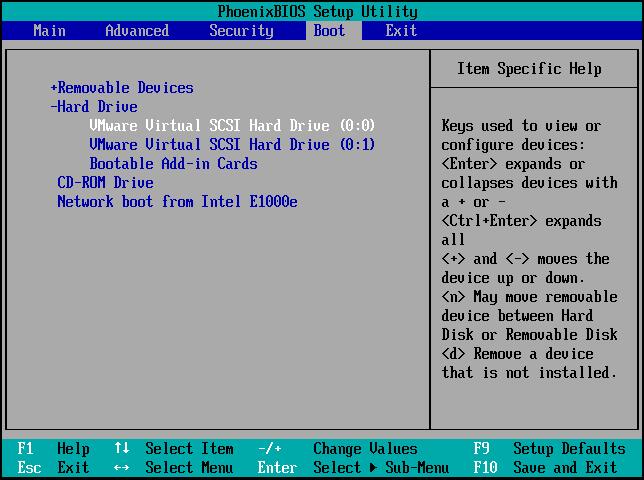
Share this guide with your followers on social media and help them with the clone NVMe SSD won't boot issue.
Method 3. Set BIOS Boot Mode to UEFI or Legacy
MBR and GPT conflict will also cause a failing boot. If you clone the GPT disk to MBR SSD or clone MBR to GPT, you must change the boot mode from UEFI to Legacy or swap from Legacy to UEFI.
- Restart your computer and press F2/F8/F12/Del key to enter BIOS settings.
- Move your mouse under the Boot tab, click UEFI/BIOS Boot Mode option, and change it to legacy or UEFI.
- Press the F10 key to save the setting and exit BIOS.
- Restart your PC and check if the cloned SSD is bootable.
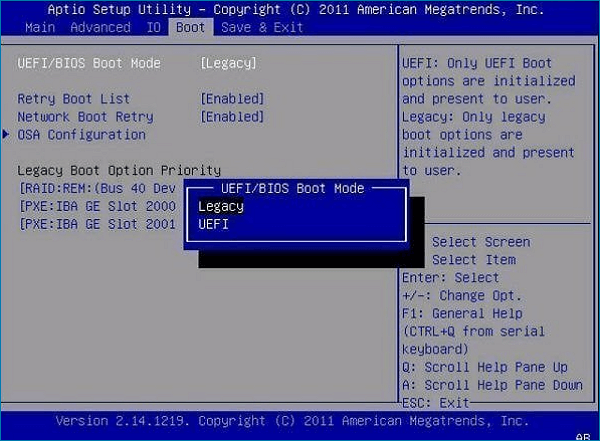
🎨Note: There are situations when your computer only supports MRB or only supports GPT. You need to convert MBR to GPT or vice versa to make your SSD bootable.
Method 4. Set System Partition as Active Partition
The system partition should be set as the active partition. If not, your computer won't boot from the cloned SSD successfully. You can resolve this issue using the following steps. To use this way, you need to download third-party software EaseUS Partition Manager in the WinPE environment.
- Restart your computer - Enter the BIOS by pressing F2/F8/F12/Del - Set your PC to boot from the EaseUS bootable disk - Restart the computer.
- Set SSD system drive as active with the steps and video.
Step 1. Run EaseUS partition manager software. On the disk map, right-click the target partition and choose "Advanced".
Step 2. Then, select "Set Active" from the drop-down menu. Click "Yes". And choose "Execute 1 Task(s)" and click "Apply".
- Restart your computer - Enter the BIOS by pressing F2/F8/F12/Del - Set your PC to boot from the cloned SSD - Restart the computer.
Method 5. Perform Bootre.exe Tool
Bootrec.exe is a utility for updating the master boot record code, partition boot sector code, and BCD (boot configuration data). You can use this Windows Command Prompt to solve 'Clone SATA to NVMe won't boot' issue.
- Prepare a Windows installation disc and boot your computer from it.
- Select Troubleshoot - Advanced Options - Command Prompt.
- Type the bootrec.exe command in the pop-up command prompt to launch this tool and fix the error.
- bootrec.exe /fixmbr
- bootrec.exe /fixboot
- bootrec.exe /scanos
- bootrec.exe /rebuildbcd
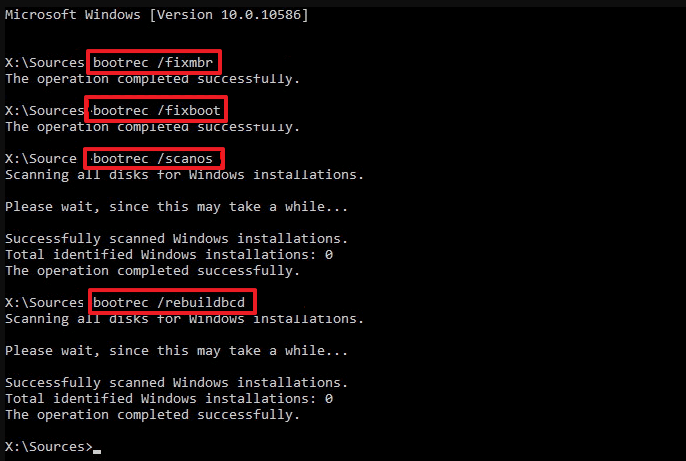
Method 6. Reclone SATA SSD to NVMe SSD🔥
If you have tried all the above solutions and none is workable, it must be an incomplete or failed SATA to NVMw SSD cloning. To ensure successful SSD cloning to NVMe, you should use a reliable SSD cloning tool, EaseUS Disk Copy, to clone Windows from SATA to NVMe SSD. Besides, it has many advanced features to make the cloning process easier.
- Fast cloning speed without data loss and simple operation.
- Compatible with various HDDs and SSDs, including SATA and NVMe.
- Support sector-by-sector cloning to copy only used space.
- Smart cloning to skip bad sectors while disk cloning.
- Migrate OS from SATA to NVMe SSD seamlessly.
With this robust disk cloning tool, you don't need to worry about a failed process or data loss. Download and clone your Samsung SSD right now.
Step 1. Download, install and run EaseUS Disk Copy on your PC.
Click "Disk Mode" and select the hard drive that you want to copy or clone. Click "Next" to continue.
Step 2. Select the destination disk.
Note: The destination disk should be at least the same big or even larger than the source disk if you want to copy or clone the source hard disk.
Step 3. Check and edit the disk layout.
If your destination disk is an SSD drive, do remember to Check the option if the target is SSD.
Step 4. Click "OK" to confirm if the program asks to erase data on the destination disk.
Step 5. Click "Proceed" to start the hard drive cloning process.
Method 7. Seek Help from Professional Technical Support
If you have tried all the above solutions but none of them work, you can contact EaseUS technical support, which offers a 1-to-1 customized service to help you find and solve the problem.
- EaseUS provides the following remote assistance to fix the boot issues:
- Fix NVMe SSD won't boot after cloning.
- Add Necessary Drivers to the Cloned SSD.
- Fix BCD error, like error code: Oxc000000e.
Share this guide with your followers on social media and help them with the clone NVMe SSD won't boot issue.
Sum Up
7 Solutions with detailed steps have been explained in the post to resolve the "Clone SATA to NVMe won't boot" issue. If you are in the same shoes, don't be anxious. Stay calm, and follow the guide above to make your cloned NVMe SSD bootable.
EaseUS Disk Copy is an excellent disk cloning tool you should never miss.It ensures a smooth SATA to NVMe SSD cloning, and you can bot from the cloned SSD without any hassle.
Clone SATA to NVMe Won't Boot FAQs
1. Why is NVMe drive not showing in boot?
If your NVMe drives not showing in the boot setting, it is possible that you have not configured the BIOS settings, the disk is not connected stably, your disk is not updated, the drive letter is missing, etc.
2. Is UEFI required for NVMe?
Yes, only systems that support UEFI can boot from an NVMe PCIe SSD. UEFI is a type of system firmware that aims to improve legacy BIOS and standardize system processes such as booting, driver loading, and so on. Booting the operating system installer in UEFI mode is critical.
3. Do I need to format an SSD before cloning?
It is not necessary to format the SSD before cloning because the cloning process will erase all data on the target disk. Formatting an SSD is also an action to delete all data on it and recreate a new file system.
-
Updated by
>Larissa has rich experience in writing technical articles and is now a professional editor at EaseUS. She is good at writing articles about data recovery, disk cloning, disk partitioning, data backup, and other related knowledge. Her detailed and ultimate guides help users find effective solutions to their problems. She is fond of traveling, reading, and riding in her spare time.…Read full bio
EaseUS Disk Copy

One-Click Disk Clone
Smooth PC Upgrade
EaseUS Disk Copy Resources

Start cloning disk with EaseUS Disk Copy

